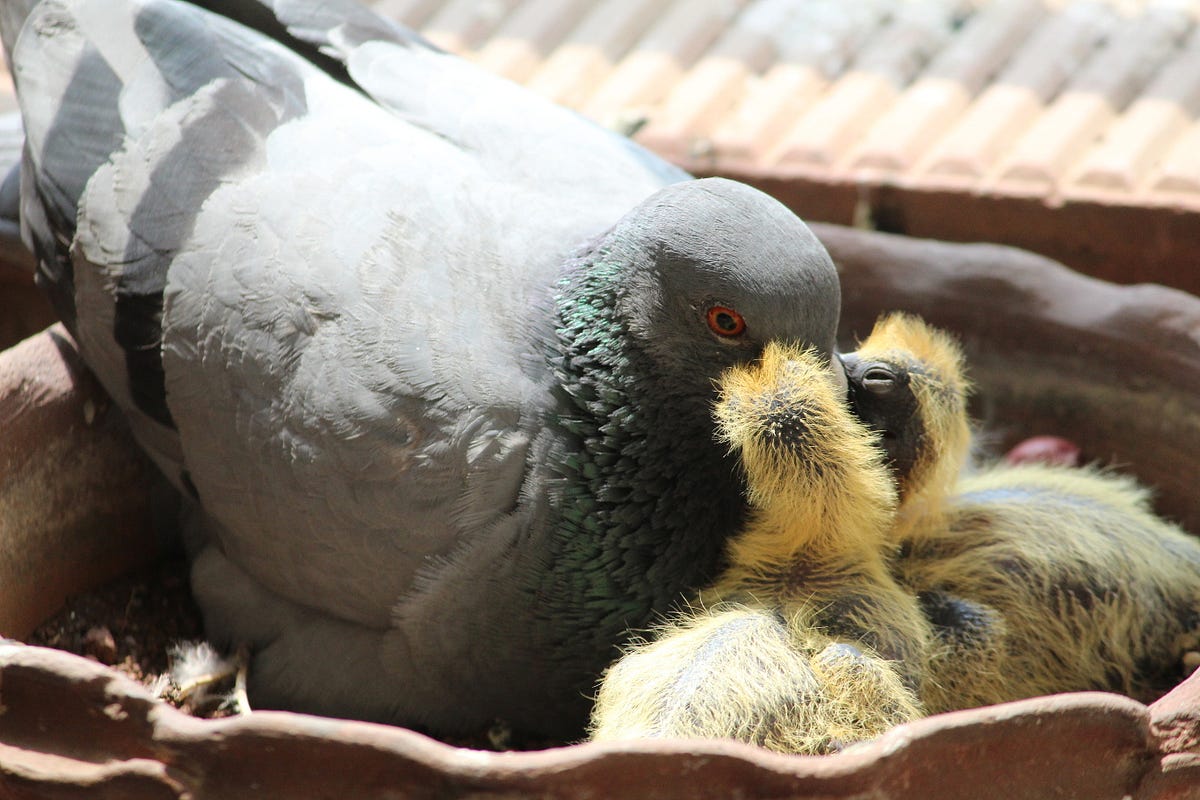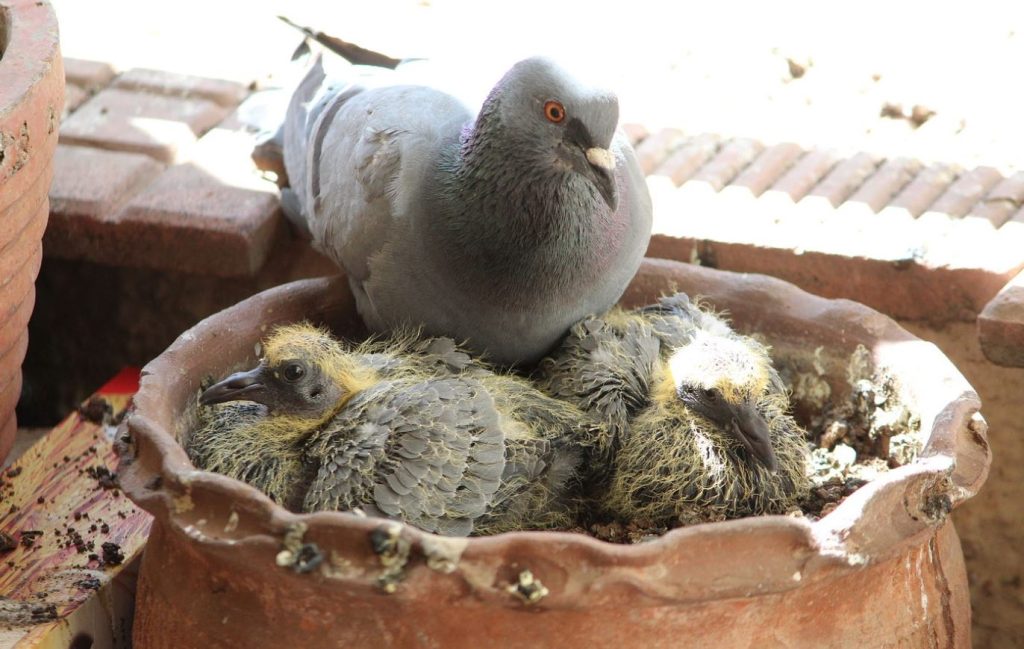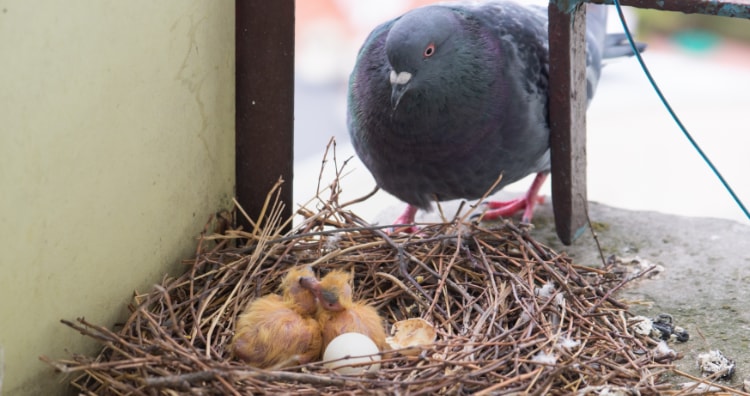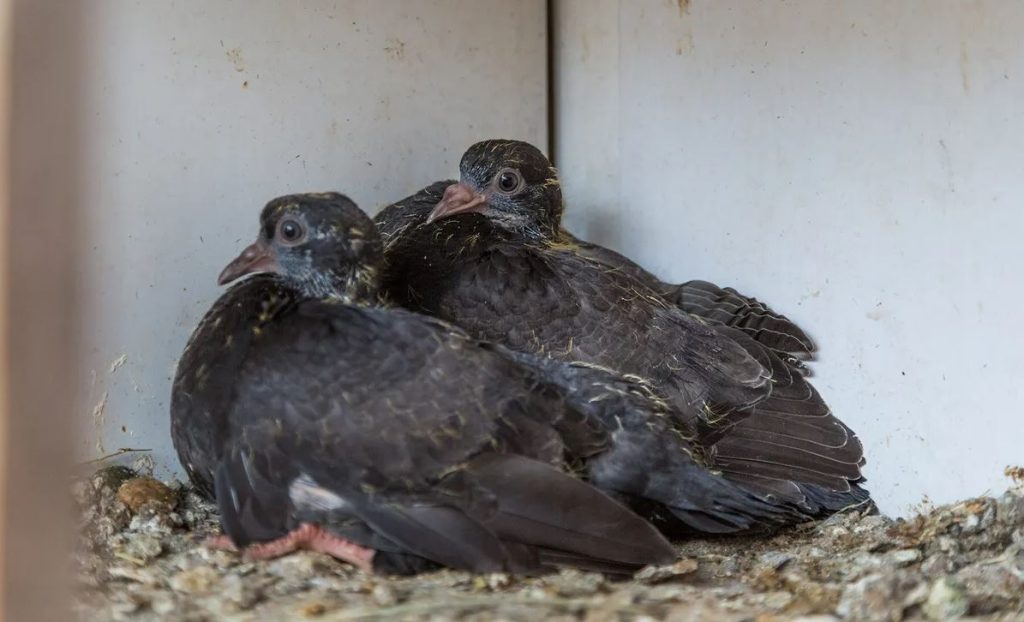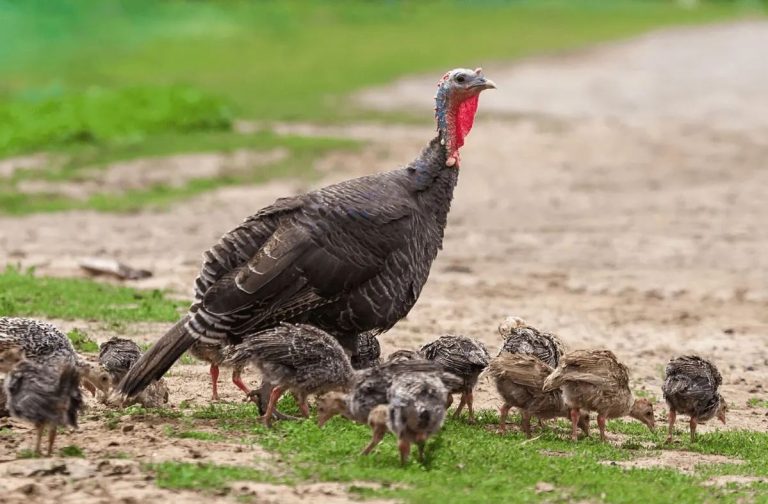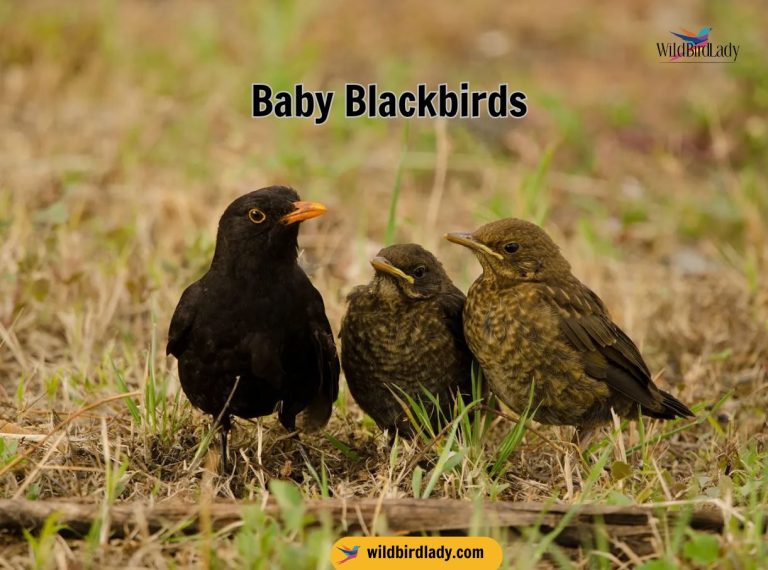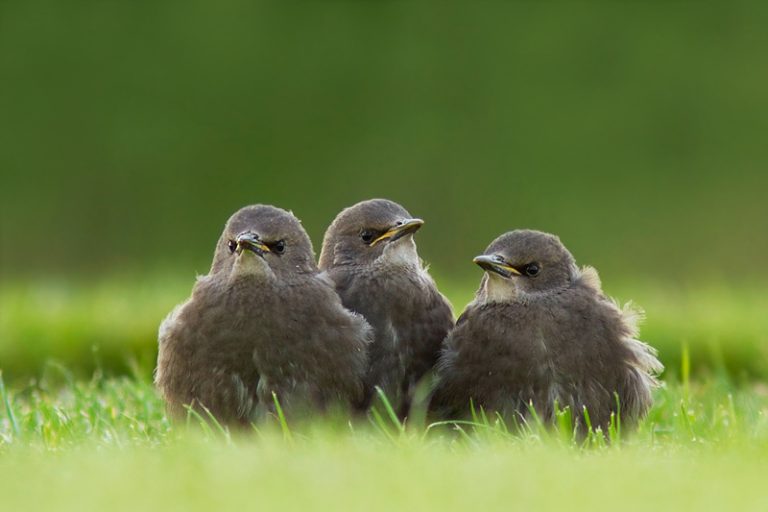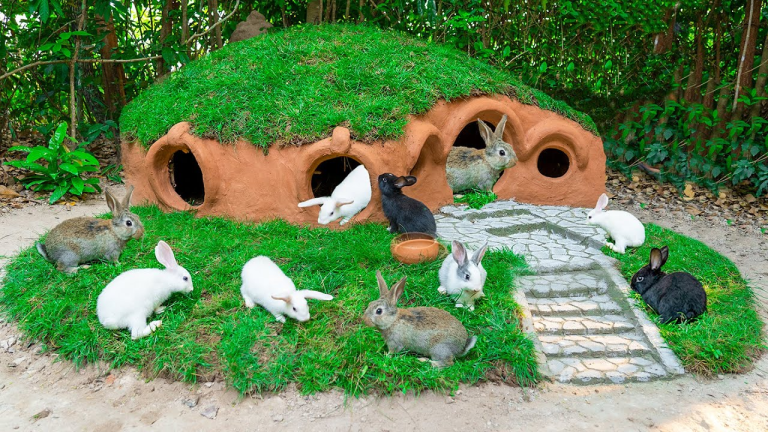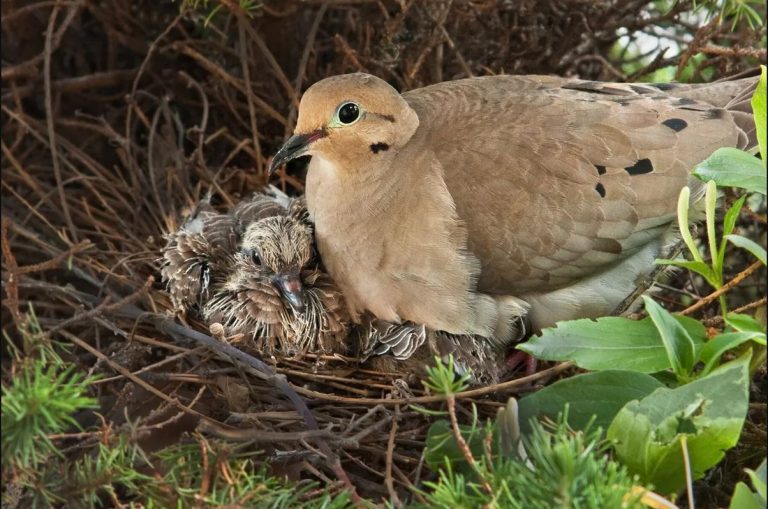Baby Pigeons: What They Look Like, How They Grow, and Where to Spot Them
By Rifat Ahmed, Birdwatching Enthusiast with 13+ Years of Experience
If you’ve ever walked through a city, you’ve almost certainly seen adult pigeons pecking at crumbs on sidewalks or perched on rooftops. But here’s a question I get surprisingly often: “Why don’t we ever see baby pigeons?”
As someone who’s spent over a decade observing birds in both urban and rural habitats, I can tell you—baby pigeons, also known as squabs or young pigeons, are very real. They’re just exceptionally good at staying out of sight.
In this comprehensive guide, I’ll explain everything you need to know about baby pigeons: what they look like, how they develop, where they live, and how to help them thrive. Whether you’re a curious bird lover or a new pigeon keeper, this guide is for you.
What Are Baby Pigeons Called?
Baby pigeons are commonly called squabs, a term used for pigeon chicks, especially when they are still in the nest and haven’t fledged. You’ll also see them referred to as young pigeons or juvenile pigeons as they grow older and begin exploring outside the nest.
Squabs remain in the nest for a surprisingly long time compared to other birds—usually about 3 to 4 weeks, which helps explain why we rarely see them in public spaces.
What Do Baby Pigeons Look Like?
Newly hatched baby pigeons look quite different from the sleek, gray adults we see in city parks.
Key Features of a Baby Pigeon:
- Size: Very small at birth—about the size of a human thumb.
- Color: Yellowish down covering their bodies; pink skin is visible underneath.
- Eyes: Closed at hatching, gradually opening after a few days.
- Beak: Long and slightly curved.
- Feet: Large compared to their body, giving them an awkward appearance.
As they grow, baby pigeons go through several transformations. Their down is replaced with feathers around day 10 to 14, and by the time they’re 20 to 30 days old, they resemble scruffy, slightly smaller adult pigeons with duller plumage.
According to Cornell’s All About Birds, pigeons (Columba livia) have a delayed fledging strategy—meaning they stay in the nest longer to develop more fully before facing the outside world.
Why Don’t We See Baby Pigeons?
This question is a favorite among beginner birdwatchers. The reason we rarely see baby pigeons is simple: they’re nest-bound for most of their early life and pigeons nest in secluded, elevated locations like:
- Building ledges
- Rooftops
- Bridge underpasses
- Attics or barns (in rural settings)
Pigeons are urban adaptors, and they use our buildings as substitutes for cliffs—mimicking the environment their ancestors favored in the wild.
By the time baby pigeons leave the nest, they’re nearly the size of an adult and capable of flying, so they skip the “adorably awkward” stage we often see in ducklings or songbird fledglings.
The Life Cycle of a Baby Pigeon
Understanding the stages of a pigeon’s growth helps explain their elusive early days.
1. Egg Stage
- Female pigeons lay 1 to 2 eggs per clutch, usually two.
- Incubation lasts 17 to 19 days, shared by both parents.
2. Newborn (Days 1–7)
- Hatchlings are blind and helpless.
- Fed exclusively on crop milk, a nutrient-rich secretion from both parents.
3. Early Growth (Days 8–14)
- Eyes open.
- Down begins to be replaced by pin feathers.
- Crop milk is slowly supplemented with regurgitated seeds.
4. Juvenile Phase (Days 15–30)
- Feathers develop.
- Begin testing their wings.
- Continue to be fed by parents.
5. Fledging (Around Day 30)
- Leave the nest for the first time.
- Still rely on parents for food for a few more days.
- By six weeks old, most juvenile pigeons are self-sufficient.
What Do Baby Pigeons Eat?
In the first week of life, baby pigeons eat only crop milk, a secretion produced in the crops of both parents. This substance is high in fat and protein, essential for rapid growth.
“Pigeon crop milk is even more nutritious than cow’s milk, containing higher concentrations of fat and protein,” according to a 2013 study published in PLOS ONE.
After about a week, the parents begin introducing partially digested seeds and grains into their diet. By three weeks, young pigeons eat mostly solid food, regurgitated by their parents.
If you are hand-rearing a squab, use a commercial baby bird formula specifically made for pigeons, and feed them with a syringe or soft-tipped feeding tube.
Where Do Baby Pigeons Live?
Baby pigeons are nest-bound until they fledge. Their nests are:
- Simple and flat
- Constructed with twigs, straw, and debris
- Often re-used multiple times by the same pigeon pair
Pigeons prefer hidden ledges, attics, or roof corners, out of reach of predators. In my own experience, I’ve spotted multiple squab nests under abandoned warehouse eaves and even inside billboards.
Once fledged, young pigeons stick close to the nesting area for a while, gradually expanding their territory as they gain independence.
How to Identify a Young Pigeon
You might spot a bird that looks like an adult pigeon but seems a little… off. That’s likely a young pigeon.
Young Pigeon vs Adult:
| Feature | Juvenile Pigeon | Adult Pigeon |
|---|---|---|
| Eye color | Dark brown | Orange or reddish |
| Plumage | Duller, scruffier | Smooth and iridescent |
| Behavior | Timid, clumsy | Confident, alert |
| Beak | Often darker at the base | Fully light or consistent in color |
Young pigeons also tend to stay in flocks with their siblings or parents longer than many other bird species.
Parental Care: Pigeon Parents Are Devoted
Both the male and female pigeon take active roles in raising their young. From incubating the eggs to feeding the squabs, pigeon parents are among the most involved caregivers in the bird world.
They often reuse the same nesting site and can raise multiple broods each year—sometimes up to 8 clutches annually in warm climates!
This high reproductive rate helps pigeons thrive in urban environments where predators are relatively scarce and food is plentiful.
Common Threats to Baby Pigeons
Although hidden from view, baby pigeons face several dangers, including:
- Predators: Rats, cats, hawks, and even raccoons may raid nests.
- Parasites: Lice and mites are common in urban pigeon nests.
- Human interference: Construction or building maintenance can disturb nests.
- Orphaning: If a parent dies, the squab may starve unless rescued.
If you find an abandoned baby pigeon, it’s best to contact a licensed wildlife rehabilitator or pigeon rescue organization.
What to Do If You Find a Baby Pigeon
If you come across a baby pigeon that seems abandoned, here’s what I recommend:
Step-by-Step:
- Observe from a distance: Parents may be nearby.
- Check for injury: If it’s hurt, call a wildlife rehab center.
- If truly abandoned: Place it in a small box with soft fabric and keep it warm.
- Do not feed bread or milk: These can be fatal. Use a baby bird formula if experienced.
- Seek help quickly: Young pigeons need regular feeding and warmth to survive.
You can find licensed pigeon rescuers through websites like The Wild Bird Fund or your local wildlife agency.
Can You Raise a Baby Pigeon?
Yes, but only if absolutely necessary. Raising a baby pigeon requires:
- Proper formula
- Regular feeding every few hours
- Warmth (especially in the first weeks)
- Socialization to prevent imprinting
Hand-raised pigeons can become extremely tame and even bond with humans. Many people keep pigeons as pets or racing birds, and some even show fancy breeds.
However, if your goal is to help a wild squab survive, it’s best to release them once they can feed themselves and fly confidently.
Final Thoughts: The Hidden Lives of Baby Pigeons
In all my years of birdwatching, I’ve learned that the most fascinating stories often happen out of sight. Baby pigeons are a perfect example—mysterious, seldom seen, yet all around us.
From their secluded nests in urban corners to their rapid development under the care of devoted parents, squabs are truly remarkable creatures. If you’re lucky enough to witness their early stages, consider it a rare privilege.
So the next time you see a flock of pigeons overhead, remember: hidden on a ledge or under a bridge nearby, a pair of parents might be feeding their tiny, yellow-fuzzed babies—future city flyers in the making.
Frequently Asked Questions (FAQs) About Baby Pigeons
1. Why don’t we ever see baby pigeons?
Baby pigeons (or squabs) stay hidden in well-concealed nests, often on high ledges, rooftops, or under bridges. They remain in the nest for up to 30 days—by the time they fledge, they already resemble small adult pigeons, making them hard to recognize as juveniles.
2. What does a baby pigeon look like?
A newborn baby pigeon has yellowish down, closed eyes, pink skin, and a long beak. As it matures, it develops scruffy gray feathers and looks like a duller version of an adult pigeon. Juvenile pigeons often have darker eyes and less iridescent plumage.
3. What is a juvenile pigeon?
A juvenile pigeon is a young bird that has recently left the nest but is not yet fully mature. Juveniles are often confused with adult pigeons but have subtle differences like darker eyes, duller feathers, and clumsier movements.
4. What do baby pigeons eat?
Baby pigeons are fed a substance called crop milk, produced by both parents. It’s rich in nutrients and helps the chicks grow rapidly. After about a week, parents start introducing softened seeds and grains. By 3 to 4 weeks, most baby pigeons eat solid food.
5. Can you keep a baby pigeon as a pet?
Yes, baby pigeons can be raised and kept as pets, especially if they’re orphaned. However, it requires specialized care, proper diet, and frequent feeding. Many hand-raised pigeons become tame and bond closely with humans, but always check local wildlife laws first.
6. How long does it take for a baby pigeon to fly?
Baby pigeons usually take their first flight at around 25 to 30 days old. By this time, they have developed enough feathers and wing strength to leave the nest and begin short flights under parental supervision.
7. What’s the difference between a baby pigeon and a young pigeon?
“Baby pigeon” usually refers to newly hatched chicks or squabs still in the nest. “Young pigeon” or “juvenile pigeon” describes a bird that has recently fledged but hasn’t reached full maturity or adult plumage.
8. Where do baby pigeons live in cities?
In urban areas, baby pigeons are typically raised in nests built on rooftops, balconies, ledges, and under bridges. These places provide shelter from predators and mimic the cliff environments wild pigeons originally nested in.
9. How many baby pigeons are in one brood?
Pigeons usually lay two eggs per clutch, and both parents share incubation and feeding duties. It’s common for city pigeons to raise multiple broods each year, especially in warmer climates.
10. Is it okay to touch a baby pigeon?
It’s best not to touch wild baby pigeons unless they are injured or orphaned. If you must intervene, wear gloves and place the squab in a warm, quiet area while contacting a local wildlife rehabilitator.

